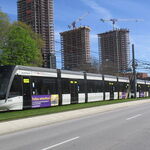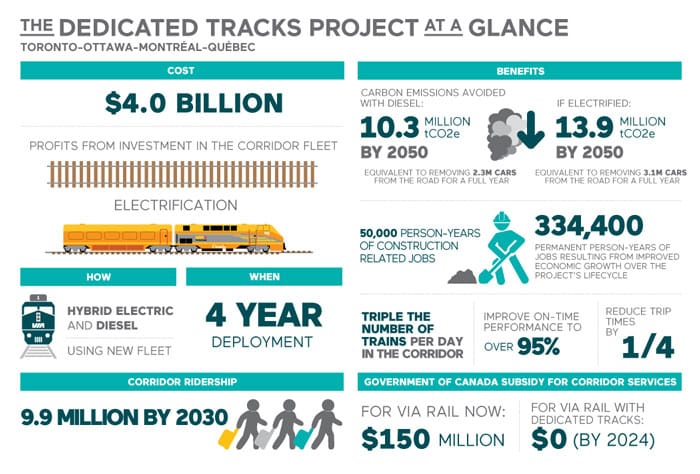One of Greg Gormick's comments to the Globe which rang true is the issue of Montreal to Toronto via Ottawa. VIA's promise of a 25% decrease in trip time is indeed undone if you route Montreal-Toronto business over this longer route.
On a totally gut level, to me the impact Toronto-Montreal trip time is the acid test of whether the new plan is an improved value proposition over today's auto, rail, and air options. Toronto-Ottawa is a piece of that, and improved Toronto-Ottawa times will improve that market segment, but without the benefit to Montreal as well, the proposal doesn't hang together IMHO.
And if you go to all this trouble of building a new line to Ottawa, but leave Montreal-Toronto trains on CN, why are we talking this through at all? Just offer CN $4B lump sum plus some share of net revenue to upgrade the Kingston and Drummondville lines, instead of spending $5B for the HFR route....I'm confident they will see that as a business opportunity, and figure out how to get the track upgraded sufficiently while retaining the greatest amount of the lump sum as their reward.
The current Montreal-Quebec schedule is heavily padded, simply because some trains encounter meets with freights but others don't. If you follow the VIA Moving Map page for a bit, you will spot trains arriving at Drummondville as much as 25 minutes ahead of schedule - and sitting there waiting for the departure time. That reflects the commercial terms CN has with VIA today. If you sweetened the pot, I'm sure CN could figure out how to cut the trip times while still moving their freights. It may not take a whole new route to achieve that, and the 'sweetener' might be less than the capital investment in the new route, with all its warts.
The more we dwell on the investment bank, and what it will take to woo investors that way, the more I think we should just talk to CN. Are they not just as interested in new business opportunities? The challenge is to demonstrate that their risk and their reward are aligned.
Lastly, I wonder if the ex CP M+O Sub figures in this anywhere. VIA's current Montreal-Ottawa route, the former CN Alexandria Sub, is curvy and likely a challenge to upgrade. The M+O sub was banked for eventual HSR use, and it's dead straight. This might be the right time to switch routes. Perhaps more expensive in the short run, but leaving the door open to things down the road.
VIA has done an excellent job of generating what is undoubtedly the lowest-cost option for renewing the Corridor. We all know what happens if you buy the absolutely cheapest car on the market, or the cheapest suit. Cheapest doesn't last longest, has the most painful tradeoffs, is always unsatisfying in the end. Cheap only works when you intend to flog it for a defined term and then throw away. I'm not sure we should be procuring infrastructure on that premise.
- Paul






